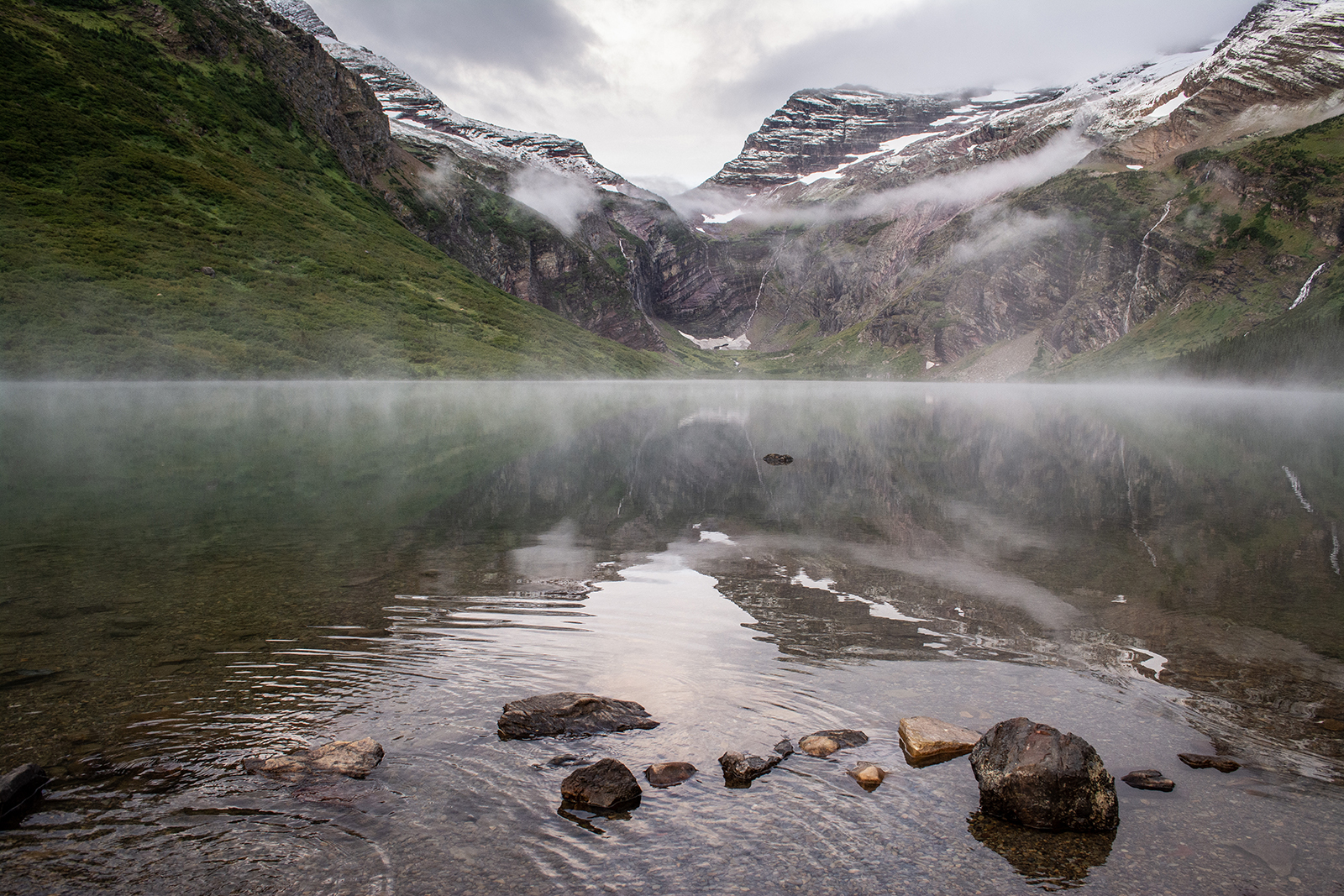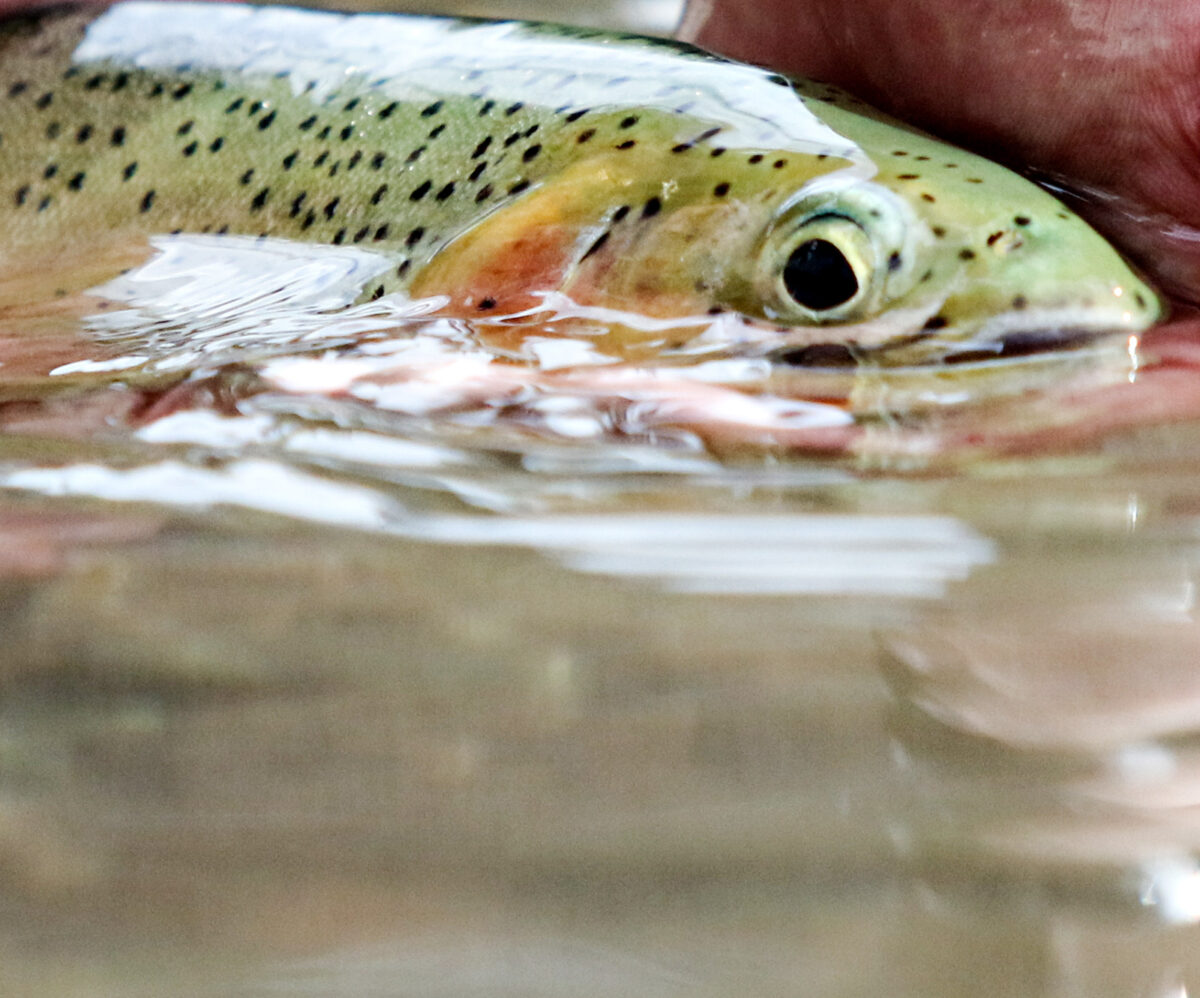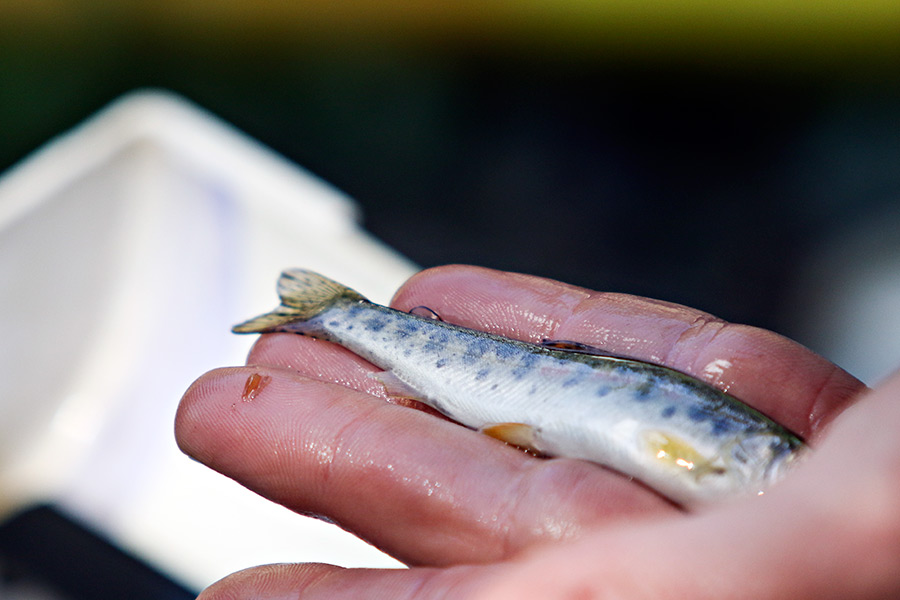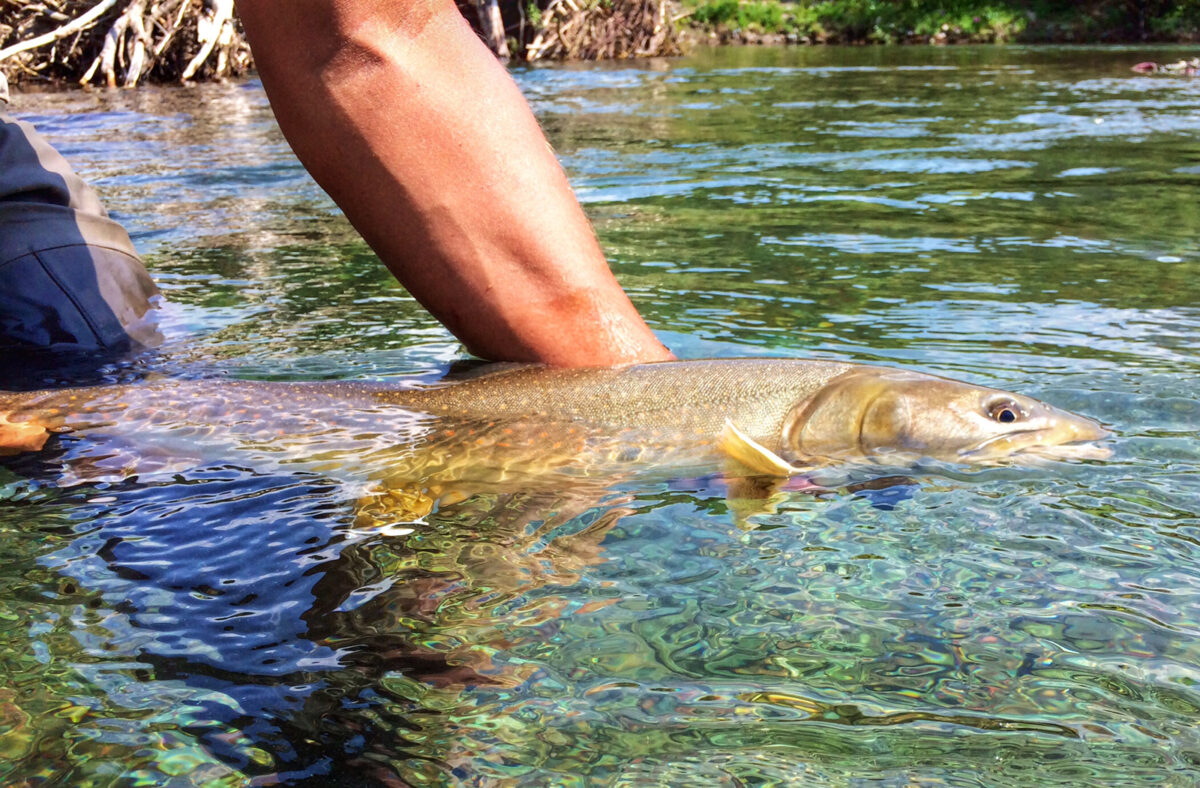Preservation or ‘Playing God?’
A coalition of conservation groups has likened a native trout restoration project to ‘playing god’ with the fisheries of Glacier National Park, but scientists say it’s one of the last best chances to preserve a species in peril
By Tristan Scott
Describing it as one of the last remaining opportunities to protect imperiled native trout species east of the U.S. Continental Divide, where aquatic ecosystems have been upended due to widespread hybridization, ecologists with Glacier National Park are preparing a final environmental review for a project to remove non-native rainbow trout from Gunsight Lake and replenish the alpine watershed with genetically pure, locally adapted westslope cutthroat and bull trout.
For local scientists who have monitored the steady decline of native fish populations in and around Glacier, the project represents a strategic intervention based on more than a decade of foundational research and proven implementation establishing a framework for native fish translocations, which have become an important tool for the longterm conservation of native species threatened by human stressors, including the introduction of invasive species, habitat loss and climate change.
But a coalition of environmental groups has pushed back on the proposal, saying it amounts to “playing god with the fisheries” in Glacier National Park, and that Gunsight Lake, which was historically fishless, should remain so in accordance with the park’s policy of managing its nearly 1 million acres as wilderness. The project, which would involve the use of a fish toxicant to kill off Gunsight’s existing population of non-native fish, as well as the use of helicopters, motorboats and generators, does not align with the Wilderness Act’s recommendation that the land remain “untrammeled by man,” according to comments submitted by the coalition last week.
“While the overall intentions of this project may be admirable, the on the ground consequences are not. There are too many unknowns that will disrupt the Gunsight Lake and upper St. Mary River ecosystems,” according to public comments submitted as part of the environmental assessment process by a coalition of groups including Friends of the Wild Swan, Wilderness Watch, the Swan View Coalition, Alliance for the Wild Rockies, and the Council on Fish and Wildlife.

As the last drainage east of the U.S. Continental Divide to support native bull trout, the St. Mary River drainage is a rarefied ecosystem that has experienced dramatic declines of its native fish populations. Today, all but one of its remaining westslope cutthroat trout populations have some level of hybridization with either non-native rainbow or Yellowstone cutthroat trout, and researchers say that without proactive management intervention their long-term persistence hangs in the balance.
A tributary of the South Saskatchewan River drainage, the St. Mary River drainage now supports hybrid species that lack the genetic and behavioral adaptations that native species have adopted over the course of millennia. Because the genetically impure populations radiate outward from infested lakes, including Gunsight, they have compromised the entire watershed. Although Gunsight Lake was historically fishless, it was stocked in 1916 with 35,000 non-native cutthroat trout and again from 1920 to 1936 with 224,000 rainbow trout.
The rainbow trout established a self-sustaining population that exists today, outcompeting the introduced cutthroat trout and providing visitors to the backcountry lake with ample angling opportunities — as well as a perpetual source of genetic inferiorities passed along to downstream fisheries.
For Chris Downs, Glacier Park’s aquatic and physical science programs leader who is responding to comments to the project, the conservation value of the Gunsight Lake preservation project far outweighs the value of maintaining the status of an historically fishless body of water.
“I understand the ecological value of having fishless waters on the landscape, because fish do modify ecosystems. But this ecosystem has already been modified by the introduction of nonnative trout more than a century ago,” Downs said. “And the consequences of those introductions are even more serious today.”
Acknowledging that Gunsight Lake was historically fishless prior to 1916, Downs emphasized that it was not fishless when Glacier Park’s wilderness baseline was established in 1974.
“If there are going to be fish in there, they should at least be native fish and have some conservation value,” Downs said. “That’s the notion driving the Gunsight Lake project. We have very few populations of genetically pure cutthroat and bull trout left in the St. Mary drainage, and while we are doing our best to blunt hybridization with those remaining populations, there is no magic bullet. But by moving some of those native fish to a secure area, and Gunsight Lake is the most secure area available in the St. Mary River drainage, we believe we can protect and continue to promote their genetic diversity.”

If the Gunsight Lake project moves forward, it wouldn’t be the first time that Glacier National Park has employed the translocation of fish as a conservation tool to protect native fish species, nor would it mark the first time the agency has deployed a fish toxicant to remove an introduced population.
In 2019, Glacier National Park in partnership with Montana Fish, Wildlife and Parks (MFWP), the U.S. Fish and Wildlife Service (USFWS), and Glacier National Park Conservancy undertook a similar project in the Camas Creek drainage, removing non-native Yellowstone cutthroat trout from Camas and Evangeline lakes and translocating native westslope cutthroat trout and bull trout to both lakes.
Beginning in 2007 in the South Fork Flathead River, FWP biologists conducted the largest conservation project in the country aimed at restoring native cutthroat by eliminating nonnative species populating the alpine lakes above Hungry Horse Dam and replenishing them with genetically pure populations of Montana’s state fish. Equipped with the genetic wiring of their ancestors, those fish then radiate out of the mountain lakes and into the South Fork Flathead River drainage.
The project helped usher in a new era of fisheries management, rooted in a growing recognition that landscape-scale conservation efforts were needed to re-establish, jumpstart and bolster genetically pure populations, which have come under siege from stream siltation, dams, over-fishing, and competition from — and hybridization with — introduced nonnative fish such as rainbow and brook trout.
Westslope cutthroat trout have lived in post-glacial western Montana for thousands of years, during which time the species has been able to survive catastrophic fires, massive floods and severe droughts. Yet less than 10% of the species’ historic range still exists, and the fish is considered a state-listed “species of concern” in Montana and “threatened” in Alberta.
Clint Muhlfeld, an aquatic biologist with the U.S. Geological Survey (USGS), the research arm that helps inform federal management and recovery of native species, has spent years working to identify suitable recipient sites for translocation in and around Glacier National Park, including the Logging, Camas and Lincoln Creek drainages west of the Continental Divide, and the St. Mary River on its eastern flanks. Describing his exhaustive research supporting translocation as a critical conservation tool, Muhlfeld says the science has been proven out with every landscape-scale conservation success.

“Unless proactive conservation and recovery programs are implemented immediately, Glacier National Park’s westslope cutthroat and bull trout will continue to become hybridized and will become extirpated east of the Divide,” Muhlfeld said. “This is all we have left to protect, preserve and restore. And without management intervention, we’re going to lose it.”
The coalition of conservation groups opposing the project also seized on the project’s proposal to collect native trout from donor sources in the larger St. Mary River River drainage, including Slide and Red Eagle lakes, as well as Jule, Roberts, Rose, Two Dog, Wild, Divide, Boulder, Swiftcurrent, Kennedy, Otatso, Midvale, and Lee creeks.
“Why must the Park tinker with those populations to conduct an experiment that may fail resulting in the depletion of the strongholds?” the coalition stated in its submitted comments. “If non-native fish hadn’t been planted in Gunsight Lake then there would not be a need now to try to poison them out. Let’s learn from history rather than repeating it. This project should not proceed.”
Proponents of the project disagree, noting that there are 72 historically fishless lakes east of the Continental Divide in Glacier National Park, including the St. Mary River drainage. Of these, 43 remain fishless.
“‘Playing god’ happened a century ago when they stocked non-native fish all over the park and caused the widespread extirpation of native fish populations,” Muhlfeld said. “This is just good science.”